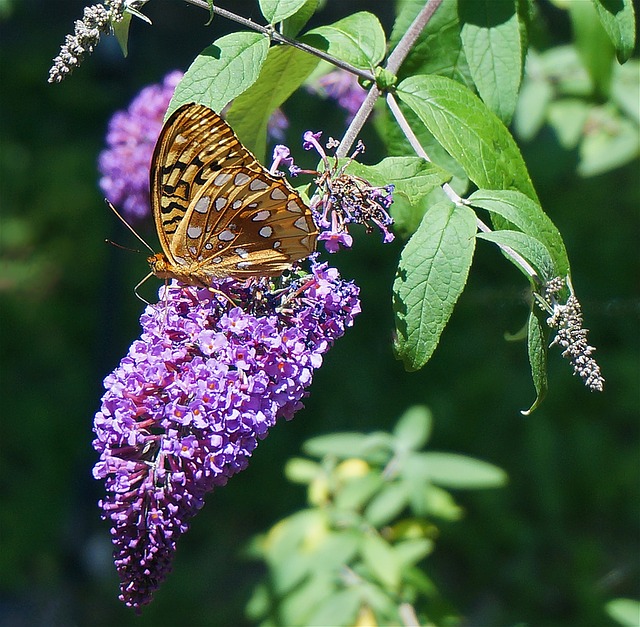Free gardening gloves when you spend $75.00 or more!
Butterfly bushes are popular flowering plants regularly found in Asia, Africa and the Americas . It’s long panicles of colorful flowers attract butterflies, hummingbirds and other helpful insects. It blooms from June and continuously through fall bursting out in magnificent purple flowers, comparable in smell and look to miniature lilacs.
A few butterfly bush facts, it is perennial and requires no fertilizer unless it is grown in very poor soil conditions. It’s seeds are contained in a capsule. Despite being named “butterfly” the plant is not a host for butterflies, therefore it neither supports their reproduction nor their lifecycle. The monarch butterfly is attracted to the flowers’ sweet scent and bright colors. Most of these shrubs grow to between 6-8 feet high with some growing as high as 15 feet.
There are other butterfly bush varieties that have pink and white flowers depending on the region they are grown in. The ‘Royal Red’ gives magnificent maroon blossoms, while the purple flowering variety comes form the ‘Purple Haze Buddleia’. If you prefer a darker hue of flowers in your garden, you can opt for the ‘Black Night’.
Some of the dwarf butterfly bush varieties are sterile like the Purple Haze and Chip series that can be shipped into states where invasive butterfly bushes are banned. The dwarf buddleia grows in a low, compact, ball shape while most butterfly bushes grow in a semi-upright manner. It is ideally used for borders because of it’s mounding character. Use it to add texture to the front of your flower garden. Make use of spacing to make a short hedgerow or just to achieve different aesthetics. You can also plant them in odd-numbered clumps to give them a visually appealing look.
Planting
- Grow butterfly bush in well drained soil, with a lot of sunlight.
- Plant in spring or fall.
- Loosen the soil and mix with compost.
- Dig a hole that is twice as big as the container.
- Once this is done, place the plant in the hole, making sure that the top of the rootball is on the same level with the garden surface.
- Depending on the variety, space the plants with 5-10 feet apart.
Maintenance
- Water the plants freely soon after planting and when in growth, after that it is best to keep it to a minimum, only doing so when there is very little rain.
- Do not fertilize often, as it is a hardy plant that will flourish well even in harsh conditions.
- You may apply a little fertilizer and a little mulch to preserve moisture. This will also help in weed control.
- Left uncontrolled butterfly bushes will grow to become trees with rugged trunks.
- Butterfly bush pruning should be done before the new season growth starts. Improper pruning will result in the bush turning into an unruly thicket that will have sparse blossoms.
- The high conical flowers should be dead-headed as they turn brown. This will also optimize new flower blooms for continuous attraction of butterflies and hummingbirds.
- In late winter you should cut them to the ground, even if there is little or no die-back. They will grow back all the larger.
Butterfly Bush Benefits
The butterfly bush is a haven for pollinators due to it’s hardy nature and drought tolerance. It can provide sustenance to recovering populations in areas where bees are facing colony collapse disorder. They also provide shelter for different bird species.
You may also achieve naturalization of open, dry ground by planting colonizer varieties of the butterfly bush. This, however, has been discouraged recently.
Butterfly Bush Problems
Although it is a relatively trouble free plant, it is susceptible to attacks when not well taken care of. Water it adequately during the dry season to avoid attacks form spider-mites. These and nematodes attack stressed plants.
You should also not keep them wet for long periods of time they may get attacked by Downy Mildew. You can prevent this by early morning irrigation giving them time to dry when the sun is out.
The plants may also face attacks from weevils, different types of caterpillars, mullein moth and capsid bug among others.
Some of the colonizer varieties are invasive species. This means that it will outgrow and suffocate native food which is important for development of wildlife.
Plant butterfly bushes in your garden for your summer enjoyment. Select from our butterfly bushes.

- cheryl's blog
- Log in or register to post comments







